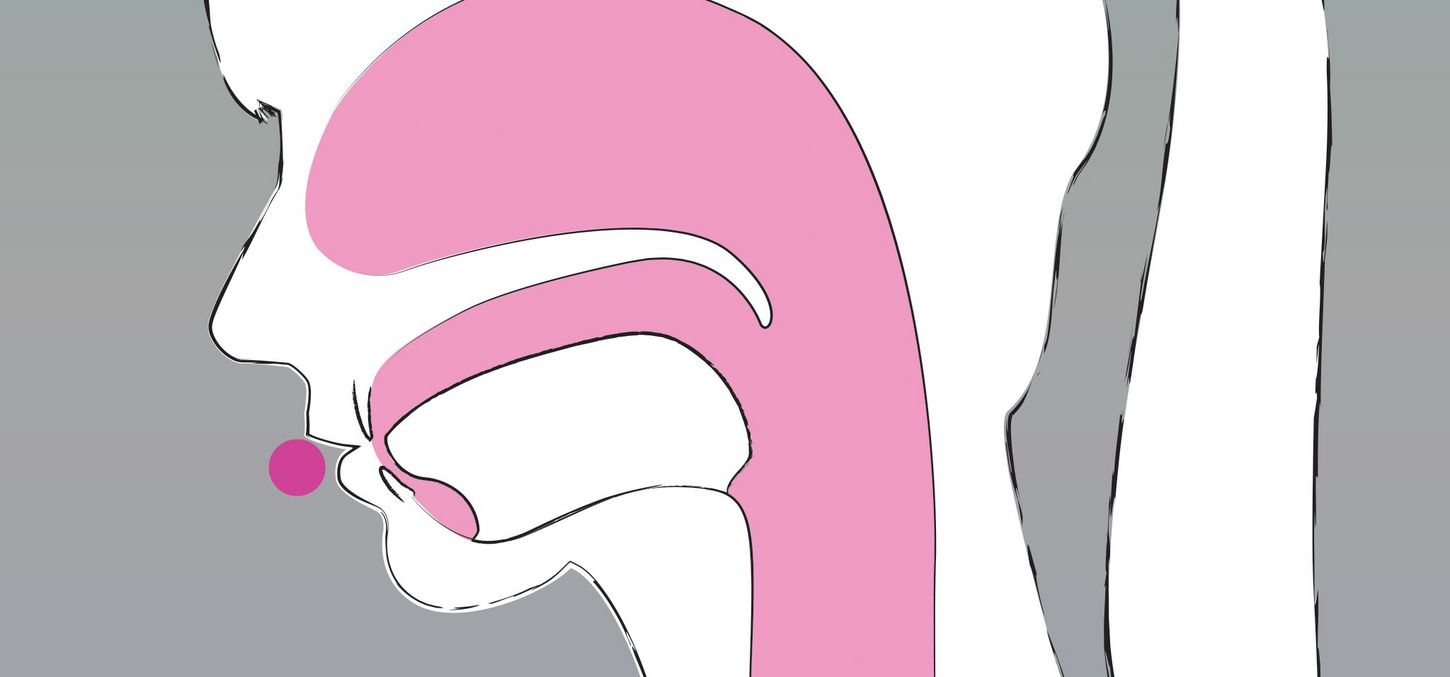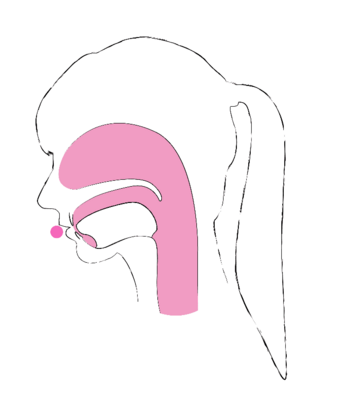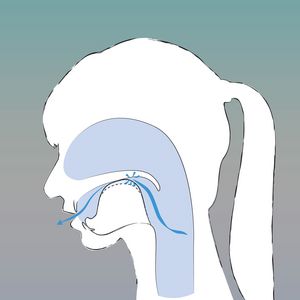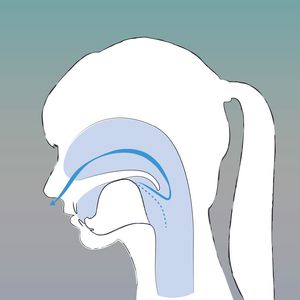Exercise
One of the best exercises to improve your pronunciation of Sanskrit is to consciously articulate all sounds produced at one place of articulation. Watch how similar the vibration of individual letters in the mouth feels and how you can easily move from one letter to the next. In this exercise, the phonation space becomes closer and closer:
- u: vowel - Round your lips, almost as if for a kiss. A short breath of air makes the lips vibrate.
- ū: vowel - The phonation space is completely open with the lips rounded as described above. There is a longer vibration between the lips which resounds in the phonation space.
- v: semivowel - The phonation space is slightly narrowed down. The vibration only occurs with the succeeding vowel.
- p: plosive - The lips are closed. The airstream creates pressure which is then released and the air bursts out.
- ph: plosive, aspirated - followed by a breath of air.
- b: plosive, voiced - with voice.
- bh: plosive, voiced, aspirated - again followed by a breath of air.
- m: nasal - The closure remains, the air streams out through the nose.
Labial vowels
- u / ū: Round your lips, almost as if for a kiss. The short u is sounded only briefly while the long ū lingers. Both vowels vibrate directly at the lips.
Examples:
- u: Mutter, kurz
- ū: Mut, Kuhle
Labial plosives
- pa: The lips are closed. The contact is released after slight pressure.
- pha: The analogue sound with more air.
- ba: The analogue sound with vibration or voice.
- bha: The voiced sound with more air.
Examples:
- pa: Papier
- pha: Pavillon
- ba: Bach
- bha: Sanskrit: Bhagavad Gītā
Again, the aspirated version can be a challenge to German speakers.
Labial semivowel
- va: produced by bringing the tongue closer to the lips (labial).
Examples:
- va: Wasser, wann
Not like the German v as in Vogel but like the German w.
Labial fricative - only a Visarga (ḥ) pronounced as an Upadhmānīya
In Sanskrit, there is no guttural semivowel.
However, a Visarga (ḥ) is pronounced as a labial fricative in front of unvoiced labial sounds (p or ph). This pronunciation of the Visarga is called Upadhmānīya. We come close to this sound when we pronounce a German fh or ph as in ''Dor-f-Platz".
Examples:
- vṛttayaḥ pañcatayyaḥ (five types of waves) is pronounced as vṛttaya-fh-pañcatayya-hā .













